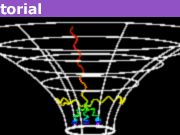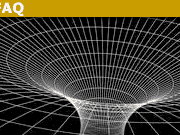Why Is Acceleration Due to Gravity a Constant?
This question has popped up many times. So here is an attempt to address it.
To answer this question at the elementary level, a number of assumptions will be made, which will become obvious later on. Still, at this point, we will simply deal with objects with spherical symmetry and no complicated mass distribution. In other words, the mass of each object can be considered to be at its respective center of mass.
For two objects with masses, the gravitational force on mass 1 due to the gravitational force of mass 2 can be written as
[tex]F_{12} = \frac{Gm_1 m_2}{h^2}[/tex]
where [itex]m_1, m_2[/itex] are the masses of object 1 and 2 respectively, [itex]G[/itex] is the universal gravitational constant, and [itex]h[/itex] is the distance between the two masses. Of course, this equation is symmetric, and the force on 2 due to 1 also has an identical form.
Let [itex]m_1[/itex] be any mass and [itex]m_2 = M[/itex], the mass of the earth. Then the force on object 1 due to the earth is
[tex]F_{1M} = \frac{Gm_1 M}{h^2}[/tex]
But since this is the force on [itex]m_1[/itex], we can equate the dynamics of this object with
[tex]F_{1M} = \frac{Gm_1 M}{h^2} = m_1 a[/tex]
Simplifying, we get
[tex]\frac{GM}{h^2} = a[/tex]
which we define to be “g” at the surface of the earth, and is a constant if we always put different masses at the same location.
This means that no matter what [itex]m_1[/itex] is, the acceleration is always a constant g. It shows that the acceleration due to gravity is a constant.
Now, in deriving this, I’ve made an implicit assumption of one thing, that “M” really doesn’t get affected much by [itex]m_1[/itex]. Recall that I said earlier that the gravitational force equation is symmetric. One can also talk about the force on the earth due to the mass [itex]m_1[/itex]. So that mass certainly exerts a force on M. However, this is where we have to consider a little bit about the center of mass of the [itex]M + m_1[/itex] system.
[tex]r_{cm} = \frac{m_1 r_1 + MR}{m_1 + M}[/tex]
where [itex]r_1[/itex] is the location of the center of mass of [itex]m_1[/itex], and [itex]R[/itex] is the location of the center of mass of [itex]M[/itex], i.e. the earth. If we put our origin at the center of mass of the earth, then [itex]R = 0[/itex]. So let’s do that. The center of mass location is then simplified to
[tex]r_{cm} = \frac{m_1 r_1}{m_1 + M}[/tex]
Now, for ordinary, terrestrial objects, the kind that Galileo (and you and I) would test in our intro physics classes, the mass of the object [itex]m_1[/itex] is much, much smaller than the mass of the earth, i.e. [itex]m_1 << M[/itex]. In that case, we can simplify the center of mass equation to
[tex]r_{cm} = \frac{m_1 r_1}{M}[/tex]
It means that the location of the center of mass of ordinary object + Earth system, for an object placed near or on the surface of the earth (i.e. [itex]r_1 ~ R_E[/itex]), depends predominately on the ratio of [itex]m_1/M[/itex].
An ordinary object weighs in the range of kg. The earth weighs on the order of [itex]10^{24}[/itex] kg, and the radius of the earth is of the order of [itex]10^6[/itex]m.
If you do that computation, you’ll get a very, very, small number for [itex]r_{cm}[/itex]. It means that the center of mass of this system is practically the same as the center of mass of the Earth, which is situated at r=0.
What I’m trying to show here is in this scenario, the earth does not make any significant motion due to the force exerted by [itex]m_1[/itex]. This means that for this case, it is perfectly fine to consider the earth as the fixed object, and only consider that it is the smaller mass that falls towards the earth. So when you consider that, then all the simplification that is done to allow us to deduce that the acceleration due to the gravity of ALL objects falling on the surface of the earth to be a constant, independent of the mass of the object.
However, if we change that situation, i.e. if [itex]m_1[/itex] is now comparable, or even bigger, than [itex]M[/itex], then those simplifications will no longer be valid, and one will have to start from the very beginning to figure this out.
As can be seen from above, we simplified our analysis by using a fixed distance “h” between the two objects, in order to focus on the importance of the mass ratio for the evaluation of g. But, what can we say about the experienced gravitational force an object AT the surface of the Earth meets, relative to the gravitational force it experiences say, 100 meters up in the air? Is it allowable for us to regard “g”, the acceleration of gravity, to be the same value in these two instances?
Yes, it is, but due to an independent effect from the effect we just have looked at concerning the mass ratio:
If we set “h” as the distance from the Earth center to the surface, an object a distance “d” up in the air has distance from Earth center h+d=h(1+d/h).
It thus experiences the gravitational force GM/(h^{2}(1+d/h)^{2}), that is, slightly less than it experiences at the Earth surface.
But, just as with our mass ratio, as long as d/h<<1, we effectively can ignore this effect, and g can effectively be modeled as a constant.
Contributed by ZapperZ and arildno.
PhD Physics
Accelerator physics, photocathodes, field-enhancement. tunneling spectroscopy, superconductivity








[QUOTE=”sandesh baghmar, post: 5229627, member: 548184″]But what is the cause of gravitional force between two bodies (they say exchange of gravitons)?? I mean how can exchange of gravitons between two bodies make them exert force on each other and that too only attractive??[/QUOTE]
It’s all about curved spacetime! Hit up the Relativity forum for more info please, as this thread is for questions and comments regarding the insights article.
The word “graviton” appears nowhere in this Insight.
Was expecting something like"It isn't, go home folks"
But what is the cause of gravitional force between two bodies (they say exchange of gravitons)?? I mean how can exchange of gravitons between two bodies make them exert force on each other and that too only attractive??
Beautiful. Thank you very much.